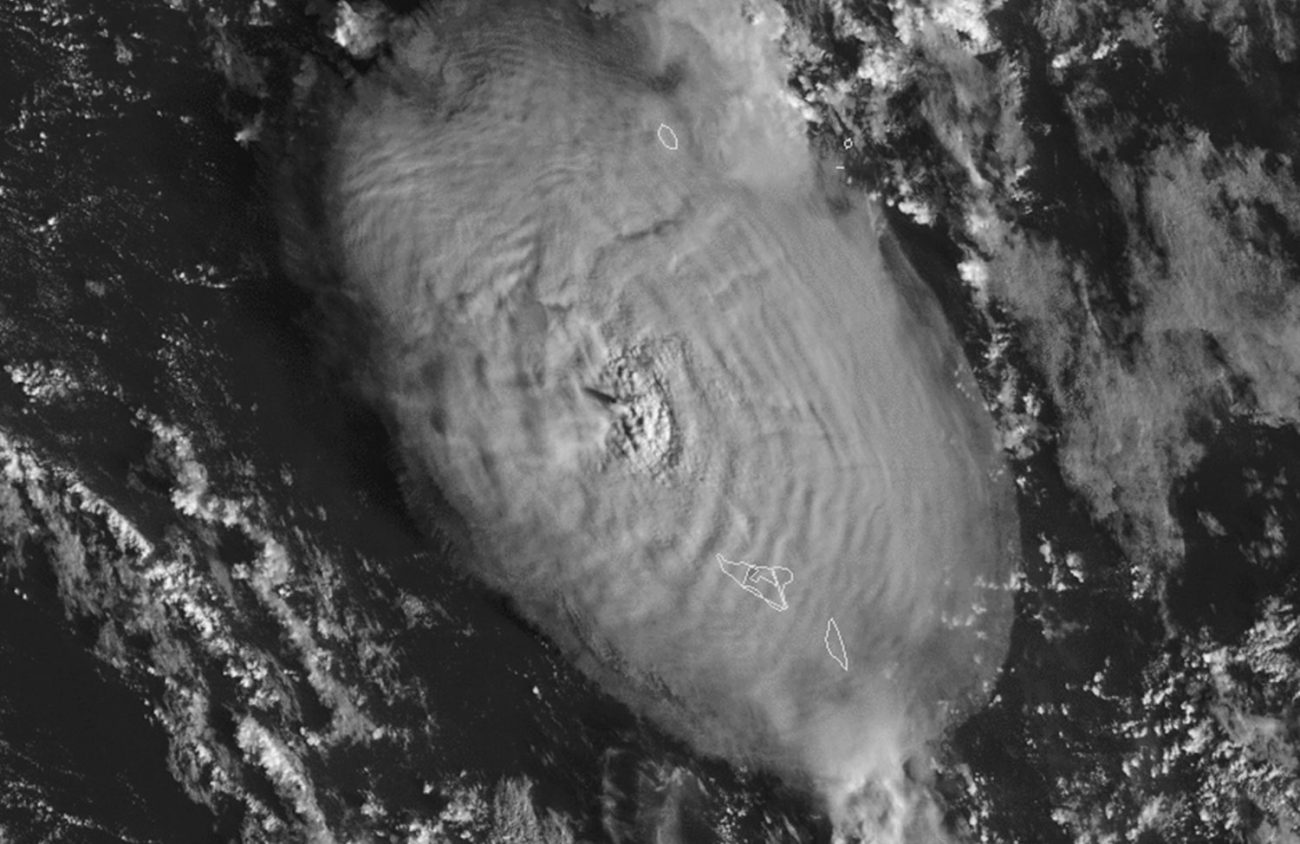It took several hours for a tsunami wave to hit the West Coast after the underwater volcanic eruption in Tonga Jan. 14. But when the Cascadia earthquake hits, a tsunami wave will arrive in minutes.
The weekend tsunami wave caused by the undersea volcanic eruption was an unusual event, says Jonathan Allan, coastal geomorphologist with the Oregon Department of Geology and Mineral Industries (DOGAMI).
The activity served as a logistical exercise for Lane County’s Office of Emergency Management, and as a reminder to the public to be prepared for the tsunami that will hit the coast after the Cascadia earthquake, which the U.S. Geological Survey estimates could be bigger than an 8.0 magnitude, based on past activity.
“If you’re on the coast, you need to be aware that we are impacted by distant and locally generated earthquake and tsunami events,” Allan says.
The volcanic eruption happened at 8:27 pm Pacific Time on Jan. 14, he says, about 5,500 miles from the Oregon coast. But it took hours for the Tsunami Warning Center in Alaska to figure out that it would result in a tsunami.
An advisory was sent out at 5 am Jan. 15, notifying the public that strong currents and waves were expected in marine waters, on beaches and in ports and harbors, telling people to stay away from those spaces, he says. It took 11 and a half hours for the tsunami to reach Port Orford in southern Oregon from the volcanic epicenter in Tonga in the South Pacific.
Lane County Program Emergency Manager Patence Winningham-Melcher says she received a call at 5 am from the National Weather Service about the tsunami advisory. “We mobilized pretty quickly,” she says. She then contacted county and city of Florence first responders, including fire chiefs and the Lane County Sheriff’s Office, and utility companies and local hospitals.
Winningham-Melcher says those agencies — as well as the U.S. Coast Guard — took preventative measures of pulling equipment from the water to protect it from the wave. She says the tsunami didn’t cause any damage.
The county also worked to clear the beachfront so that people weren’t there when the tsunami waves arrived. Lane County used various notification systems to those in the coast area, including reverse-911 calls to landlines and wireless emergency alerts. But it didn’t use its Emergency Alert System that’s broadcast countywide on TVs and radios. “Everybody would’ve known about it, and I feel like the saturation was adequate with the news media,” Winningham-Melcher adds.
However, she says an unfortunate result of warning the public about the tsunami means attracting people to the scene, which is what happened that Saturday. “The most important takeaway is that we need to be able to figure out how to inform people to not flock to the oceanfront to watch the waves come in,” she says. “I don’t know if we’re ever going to change that.”
Allan says he saw social media posts of people traveling to the coast after the tsunami advisory was published, and he cautions people against doing that. He says the waves that hit Newport were measured at .6 feet amplitude. That measurement looks like a small wave but he says there’s a lot of energy in the wave. “It can knock people off their feet,” he adds. “When these warnings are issued to stay off the beach, that means exactly that — because you can be knocked off the beach.”
For tsunami waves caused by distant events, there’s time to prepare, Winningham-Melcher says. The county had hours to prepare and work with agencies. But when the Cascadia earthquake hits, the tsunami alert \is the earthquake itself, “and you’ve got 10 minutes — if that — to get out of the way of a potential wave.”
The Cascadia subduction zone is off the coast of Oregon, Allan says, and DOGAMI simulations predict that a tsunami wave would hit the coast in about 10 minutes at Gold Beach to the south and arrive in 20 to 22 minutes to the northwest beach of Seaside, where the community would then be inundated in about 30 to 34 minutes.
“That obviously includes the three to five minutes of earthquake shaking in that timeline, so it’s a very rapid response,” he adds. “That long and slow earthquake movement would be your signal to evacuate to high ground as soon as possible.”
During an earthquake, it’s not recommended to go outside, so Allan says it’s important to know your local nearest evacuation route and have a “go-bag” ready so you can get to high ground as soon as the ground is done shaking.
To find Oregon coast evacuation maps, visit here. For neighborhood specific maps, visit here. And for an overview on how to be prepared from Lane County government, visit here.
